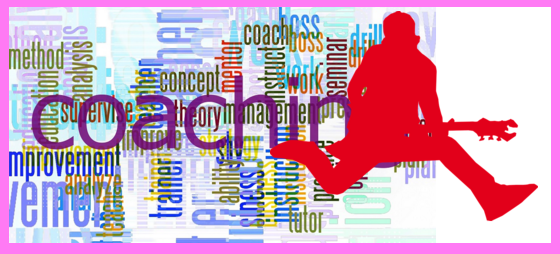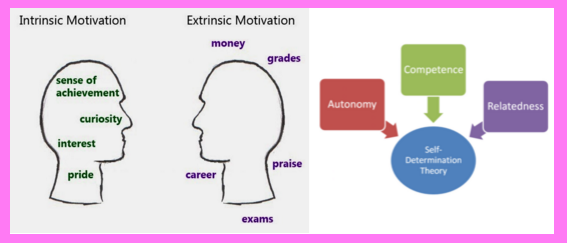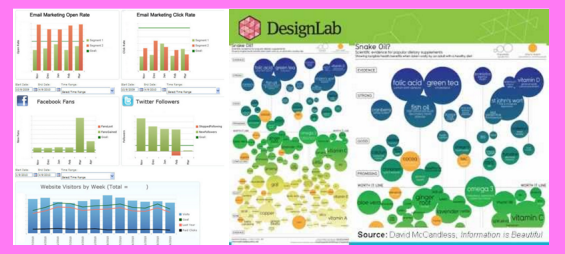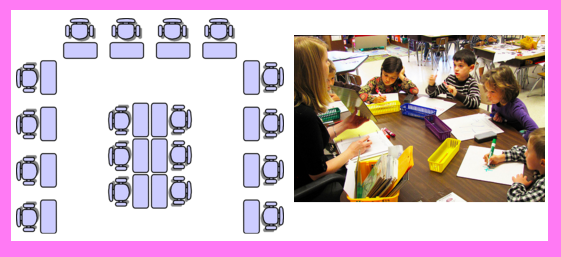
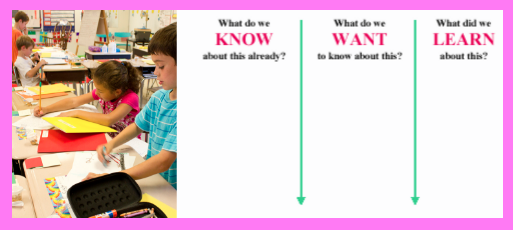
- Nonstop write:
- students write nonstop in response to a prompt for set time (3-5 min)
- write in sentences and paragraphs
- focus on quantity, not on perfect grammar
- uses: varied, include by not limited to:
- reflection
- introduce material
- recall material just covered or uncovered
- build up student perseverance
- practice for essay writing on timed tests
- watch how thinking evolves over a project
- Play by play:
- start with shorter period of time and build to gradually build up student stamina
- explain purpose of writing activity and how writing will be used
- explain norms – silence write for entire period of set time
- to alleviate writers block – give students 1-2 min to brainstorm what to write with a partner
- quick class brainstorm on class visuals
- reasons students may shut down before time expires:
- putting thoughts to paper is a skill that needs to be practiced
- continuous sentence and paragraph writing takes effort
- requires students to expand on details until exhausted
- work the room and encourage students to continue writing who stop early – ask for more examples and details
- leverage the work:
- use as conversation starters:
- read aloud in pairs and discuss and report out findings
- share in groups of 3-4 and identify common threads and report out findings
- guided rereading – reread piece and look for:
- sentences that get to heart of your message
- examples that illustrate message
- off topic and vague sentences
- 3 favorite words
- self evaluate writing style
- rank how quickly one gets off topic
- rank how well you keep writing for set time
- number of words in entry
- what do you need to do differently to meet later expectations (ex: min 150 word count)
- use as conversation starters:
- Reflective Write:
- writing piece meant to get students to reflect on learning
- uses:
- pause and note what was learned and how learning occurred
- situate learning in larger context
- diagnostic tool – are students on track? what’s hard? how deep is their thinking?
- process readings
- gather thoughts for upcoming task
- play by play:
- model what reflective writing could look like, include:
- reflections on mistakes and confusion
- reflections on learning processes
- read and analyze features of sample reflections from previous years
- practice reflective writing on a simple common process
- work the room
- encourage individual students who struggle
- if most struggle, stop work time and model again
- leverage the writing:
- follow up with one-on-one conferences on student thinking and struggles
- use as conversation starters in reflective conversations
- model what reflective writing could look like, include:
- KWL:
- brainstorming used to drive instruction:
- K – what do I know
- W – what do I want to know
- L – what have I learned
- used throughout the project (note – another form of this is a Knows, Need-to-Knows and Next Steps chart)
- uses:
- expose and build on prior knowledge
- expose need-to-knows and want-to-knows
- expose misconceptions
- review what has been learned
- engage students in co-planning upcoming learning activities
- play by play
- prior to teaching a topic have students individually brainstorm everything they know about the topic
- gather student ideas on flip chart in the K column – record all ideas, even misconceptions
- can put question marks next to statements that contradict each other
- students brainstorm list of questions about the topic in groups of 3-4
- remind students they can ask questions that go with disputed ideas (ones with ?)
- gather student ideas on flip chart in the W column
- encourage students to nod heads if they have the same question being put on the flip chart
- later in the project, have students brainstorm more questions – gather these in the W column
- later in the project, have students brainstorm list of what they have learned – gather these in the L column
- tips:
- if students hesitate on the want to learn lists – ask them to predict what they are about the learn
- do not use on topics that students have no prior knowledge of
- prior to gathering whole class lists, ask students to share what they wrote in groups of 3-4 and come up with list of 5 common items and report these to the whole group share
- could ask students to brainstorm next steps to learn what’s in the W column
- brainstorming used to drive instruction:
- Teacher student correspondence:
- teachers and students passing notes / letter over extended period of time
- uses:
- model writing
- individualized texts
- get to know students
- gather feedback to target instruction
- improve morale
- deeper learning
- build relationships with students
- hear from students who don’t talk much
- cues for guiding individualized instruction
- cluster student needs for responsive teaching
- self-assessments
- classroom management
- play by play
- get students set time (~ 15 min ) to respond to prompts such as
- how is the course going?
- how can I help you be more successful?
- anything you want to tell me about your life out of school?
- what kind of things do you do outside of school?
- what makes the course challenging?
- what connections do you see between the course and your life?
- alert students that you will alert the guidance counselor if they reveal things that need guidance counselor follow-up
- write a short note back in response to each student’s writing
- tips
- do with one period a week to avoid getting overwhelmed
- if individual letters take too much time – read all letters and write one long letter in response to all of them to the whole class, try to work all students input and questions into the letter
- get students set time (~ 15 min ) to respond to prompts such as

Teachers can use a variety of Write-to-Learns (WTLs) to get students to actively process information in a variety of ways. Teachers can use the non-stop writes to see how student thinking is evolving and to help students gather thoughts that can impact products. Teachers can adapt the KWL steps above to facilitate more detailed and helpful Know, Need-to-Know, Next Steps discussions. Teaches can use teacher student correspondence to model writing, convey caring, and build up moral and relationships.

- Analyze standards and generate learning targets
- Analyze behavior norms and student behavior and generate character learning targets
- Use knowledge of content and students to Identify which WTL’s can be used to process information in ways that highlight useful connections
- Develop prompts and tools related to selected WTL’s that target academic and character learning targets
- Implement WTL’s. See ideas above and also here, here and here.
- Facilitate follow-up discussions and activities that make use of the WTL’s.
- Have students reflect on WTL’s and try to identify which strategies are the most helpful. Use their suggestions to build WTL routines that match their preferences.
- For individual WTL’s – give students choice among several strategies that match their preferred modes of communication.


 Chapter 4 in
Chapter 4 in 
